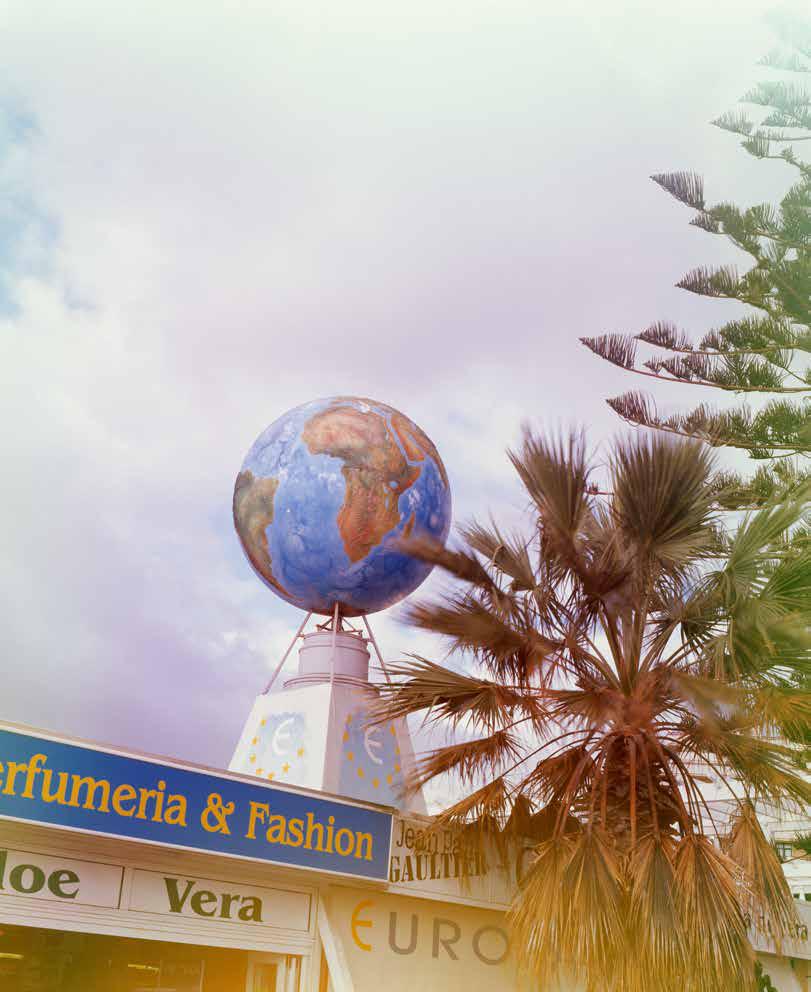Seba Kurtis
In/visible Migrants
When Seba Kurtis (1974) photographs migrants and their stories through the lens of his 5×4 camera, his images hint at a subconscious experience. His photos remind the general spectator of traveling; however, they are a confrontation with the hidden side of a problem, which is taking place not far from our daily lives in Europe as well as in many other parts of the world. Kurtis has now spent a long period of time among illegal immigrants on his projects in the role of a photographer, yet he has not always been just a viewer. Kurtis lived in his homeland of Argentina until 2001 when political and economic conditions compelled him and subsequently his entire family to emigrate. He moved to Spain, where he wasn’t welcomed despite his European roots (his mother is Italian and his father Greek) and stayed there for the first five years illegally. While working in construction, he met people who had fled from different countries and for different reasons, but they all had the same goal – to find a dignified way of life. Kurtis, who originally studied journalism, experienced the side of reality that usually gets left out in the media.
In his most recent series, Paraíso (2018), Kurtis captures the landscape where refugees first arrive after their hazardous journey across the Mediterranean Sea. Although many of them tragically die during this voyage. Kurtis reacted to this occurrence in his photographic series Drowned (2008) in order to reframe the fatalities that are often documented in the news as mere numbers. Nevertheless, statistics and graphs are important for the latest series, as Kurtis uses glitter in his photographs to visually trace and translate quantitative information about the Canary Islands, where surveys show socially and financially difficult environments with grievous consequences. In spite of it all, the Islands continue to be the destination of large numbers of illegal migrants. And thus, a dream of paradise is suddenly fading from the photograph with the Sueño sign (the artist’s wordplay in Spanish: dream – sueño, paradise – paraíso).
Kurtis’s photography is often created by manipulating the negatives. Interventions during the developing process or in the finished image describe his aesthetic signature, such as the Heartbeat series (2012), which presents invisible portraits of refugees. By these means, Kurtis creates a visual parallel with the way the police use heartbeat detectors to search for illegal refugees hiding inside cargo trucks. Unseen, yet exposed. The obscure image in these photographs is made by overexposing the film, and only a closer look reveals the imperceptible silhouettes. This technique paradoxically helps make the overlooked situation of migrants more visible. The method of using the faded effect also blurs a purely documentary nature of Kurtis’s photography, representing the vague memory of disappeared persons and unfulfilled expectations. A similar technique was also used to make the aforementioned series Drowned, as the film was immersed in the sea in order to damage the chemical makeup and consequently the developed images. The unstable chemical process was caused by the destructive salt water. This is also a metaphorical affliction on the lives of migrants, as they board ships and cross harsh seas towards European shores that ultimately aren’t any more hospitable.
The photographic collages Talcum (2015) refer to an incident when illegal refugees from the Middle East were hiding in a truck transporting talcum powder (originating from the Arabic word talq) in order to get over the British border. Images of the minerals cover the faces of immigrants who must remain in hiding from state authorities during their illegal stay. The rocks in the foreground also stand for the prioritization of the inorganic material over the worth of human lives on our economic scale of values. The photography of Seba Kurtis and his investigation into the environment of illegal migration attempt to restore balanced and humane dimensions of migrants’ identity. The overexposed and aesthetically intense images help change our negative perception of illegally migrating people and zoom in on their own complicated journeys and circumstances, which are part of global political phenomena.








#33 investigation
Archive
- #45 hypertension
- #44 empathy
- #43 collecting
- #42 food
- #41 postdigital photography
- #40 earthlings
- #39 delight, pain
- #38 death, when you think about it
- #37 uneven ground
- #36 new utopias
- #35 living with humans
- #34 archaeology of euphoria
- #33 investigation
- #32 Non-work
- #31 Body
- #30 Eye In The Sky
- #29 Contemplation
- #28 Cultura / Natura
- #27 Cars
- #26 Documentary Strategies
- #25 Popular Music
- #24 Seeing Is Believing
- #23 Artificial Worlds
- #22 Image and Text
- #21 On Photography
- #20 Public Art
- #19 Film
- #18 80'
- #17 Amateur Photography
- #16 Photography and Painting
- #15 Prague
- #14 Commerce
- #13 Family
- #12 Reconstruction
- #11 Performance
- #10 Eroticon
- #9 Architecture
- #8 Landscape
- #7 New Staged Photography
- #6 The Recycle Image
- #5 Borders Of Documentary
- #4 Intimacy
- #3 Transforming Of Symbol
- #2 Collective Authorship
- #1 Face
